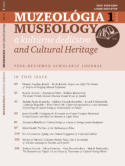The Story of the Old Rectory in Žilina
The Story of the Old Rectory in Žilina
Author(s): Miloš DudášSubject(s): Museology & Heritage Studies, Architecture, History of Church(es), Recent History (1900 till today), 17th Century, 18th Century, Pastoral Theology
Published by: Univerzita Komenského v Bratislave, Filozofická fakulta
Keywords: Rectory; national cultural monument; declaration; church; demolition;
Summary/Abstract: The fate of the so-called Old Rectory in Žilina, situated next to the monumental Church of the Holy Trinity, was emotionally charged, controversial and, in the end, very sad. The Rectory’s architecture and construction reflected both the needs of its various owners, and many of the dramatic events that had affected the city throughout its history. Despite repeated damage by fire, the faith community always found the strength and energy to restore the building and bring it back to life. Up until 1989, the Rectory was an integral part of the community’s spiritual life, and even after then, its upper storey continued to serve as the Church’s pastoral centre and a meeting place for Christian youth activities, while the ground floor housed the city’s Tourist Information Board and a popular restaurant. The Rectory was declared a national cultural monument in 2008, just as a developer was taking an interest in the site on which it stood. At this point, the local Church authorities decided it was not worthy of salvation and swiftly lodged an appeal against the decision to protect it, downplaying the building’s historical and architectural value, suggesting that since its original Late Medieval/ Early Modern features had been lost to fire 1678, the current building, reconstructed in 1777, was of no significant value. While a decision on the appeal was still pending, the Rectory was demolished, in the middle of Saturday night, July 12, 2008. The ground on which it stood was completely excavated within a week, allowing no possibility of recovery archaeological research. Eventually, a shopping centre was built over the place it once stood. This article discusses the controversial processes that led to the building’s abrupt demolition, and explores the failure to bring charges against those responsible for its destruction, which took place contrary to the Monuments Act.
Journal: Muzeológia a kultúrne dedičstvo
- Issue Year: 9/2021
- Issue No: 1
- Page Range: 97-118
- Page Count: 22
- Language: English

